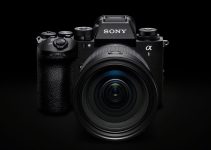Of all the cameras announced and released in 2018, none has garnered the amount of buzz that the Sony A7III has received thus far. For less than $2,000, the full-frame mirrorless beast made waves in the filmmaking community with a slew of neat video features at an affordable price.
Despite the praise given to the A7III, Fujifilm had also released a featured packed video-oriented mirrorless camera to compete head-to-head with Sony and other front-runners on the market. The Fujifilm XT-3 not only is priced lower than the ubiquitous A7III, but its specs alone are enough to make the engineers at Sony quake in their boots…at least on paper.
Real-world performance seems to be a whole different story, though. So, let’s find out which camera would be best for quick-turnaround online video production.
To start off, the Sony A7III boasts a 24MP Full Frame BSI sensor, superb in-body image stabilization, 4K 30fps recording capabilities, and some of the best autofocus technology in the industry. The XT-3 standout features, on the other hand, include a 26MP APS-C BSI sensor, an advanced autofocus system (comparable to the A7III’s offering), 4K 60fps at 400Mbps, 10-bit 4:2:0 H.265 internal recording, and dual UHS-II SD card slots.
In terms of ergonomics and operation, both the A7III and X-T3 are quite similar. Each seems very easy to work with, with the notable exception of the A7III having a slightly bigger build for better hand-held operation.
Both cameras are also designed with many customizable buttons and dials for easy function mapping to save time during setup. Fujifilm, however, cleverly designed the X-T3 with dedicated dials to physically change the shutter speed and ISO, which many have found to be a very convenient and well-implemented feature – one that the A7III lacks.
When it comes to ease-of-use, both cameras are identical regarding how one gets around each products’ menu systems to access specific functions. Similarly, the A7III and X-T3 share some usability caveats, including limited touchscreen functionality which only works for manual focusing.
It’s also worth noting that the Fujifilm’s newest offering is slightly smaller and compact – both the body and the lenses when compared to the Sony A7III. In addition, there is a dedicated tally light on the front of the XT-3 to signal whether or not it is recording. Lastly, the accessory port doors on the side of the unit can be removed so that the attached cables are not interrupted by flimsy plastic doors, as found on the A7III.
When it comes to each camera’s ecosystem, the A7III turns out to be far superior. While Fujifilm’s line of lenses and accessories is constantly increasing, Sony’s earlier presence on the market has led to many more third-party manufacturers already developing a significant number of add-ons for the A7III and the rest of the counterparts belonging to the Alpha-series lineup.
Last but not least, image quality plays a key role in choosing between the two cameras. Similar to the previous tests, both the A7III and X-T3 produce footage that would work well in any production. However, the X-T3 is deemed to have slightly better image quality and to be more efficient thanks to the inclusion of 10-bit 4K 60fps internal recording and H.265 onboard codec.
Overall, you can’t go wrong with either camera. The A7III has been a proven powerhouse of a camera since its release with many followers fawning over Sony’s pride and joy.
Fujifilm, on the other hand, has stirred up a debate as to which mirrorless is the best with their X-T3 model. With high-end features at a price-point lower than the current front-runner, the X-T3 is a definite pick for video shooters who produce online content with quick turnaround time.
[source: The Everyday Dad]
Order Links:
Sony Alpha A7 III Mirrorless Digital Camera (Body Only) (B&H, Amazon)
Fujifilm X-T3 Mirrorless Digital Camera (Body Only, Black) (B&H, Amazon)
Disclaimer: As an Amazon Associate partner and participant in B&H and Adorama Affiliate programmes, we earn a small comission from each purchase made through the affiliate links listed above at no additional cost to you.



